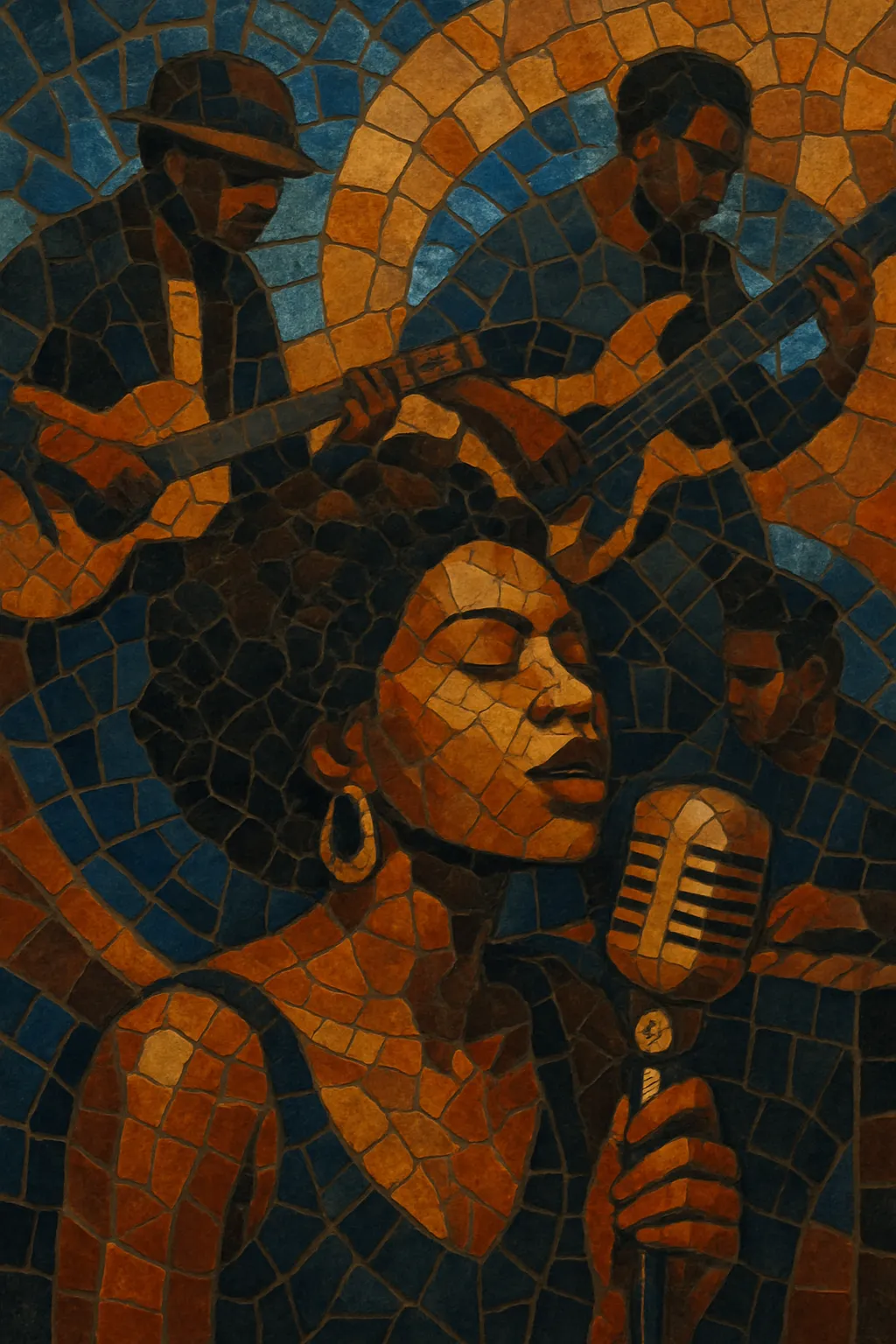Neo soul is a contemporary evolution of soul that blends the warmth and musicianship of 1960s–70s soul with hip hop’s rhythmic sensibility and jazz harmony.
It typically features live-band instrumentation (Rhodes/Wurlitzer keys, electric bass, pocket drums, guitar), lush extended chords, and expressive, gospel-informed vocals. Grooves are often unquantized or deliberately "behind the beat," evoking the laid-back feel popularized by producers like J Dilla. Lyrics tend toward introspection, romance, identity, and social consciousness, prioritizing album craft and analog textures over radio-driven formulas.
The sound is intimate yet sophisticated: think smoky harmonies, subtly syncopated basslines, and drum pockets that feel both head-nodding and deeply human.
The term "neo soul" was popularized in the mid-1990s (often credited to Motown executive Kedar Massenburg) to describe a new wave of artists who revived classic soul aesthetics while embracing hip hop-era production values and jazz harmony. Early touchstones included D’Angelo’s "Brown Sugar" (1995), Maxwell’s "Urban Hang Suite" (1996), and Erykah Badu’s "Baduizm" (1997), which foregrounded live instrumentation, intimate songwriting, and a distinctively unhurried groove.
A key hub was the Soulquarians collective—Questlove, J Dilla, James Poyser, Erykah Badu, D’Angelo, Common, Bilal, and others—who worked extensively at Electric Lady Studios. Their collaborations cemented neo soul’s sonic DNA: warm, analog textures; swung, behind-the-beat drums; gospel-inflected harmonies; and album-oriented artistry. Lauryn Hill’s "The Miseducation of Lauryn Hill" (1998) and The Roots’ work further bridged hip hop and soul sensibilities for mainstream audiences.
Through the 2000s the style broadened geographically and aesthetically, informing U.S. and U.K. scenes alike, intersecting with acid jazz, nu jazz, and singer-songwriter traditions. Artists such as Jill Scott, Angie Stone, India.Arie, Musiq Soulchild, and Raphael Saadiq brought neo soul’s intimacy and craftsmanship to wider audiences, while producers and bands adapted the sound for live settings and festival circuits.
Neo soul’s harmonic language, pocket, and album-centered ethos have deeply influenced alternative R&B and lo-fi hip hop/lo-fi beats scenes, as well as contemporary pop-R&B. The signature "human" drum feel, Rhodes-centric palettes, and gospel-informed vocal arranging remain staples across modern R&B, indie soul, and jazz-adjacent styles. New generations continue to reinterpret the blueprint with fresh rhythmic ideas, global influences, and DIY production.


